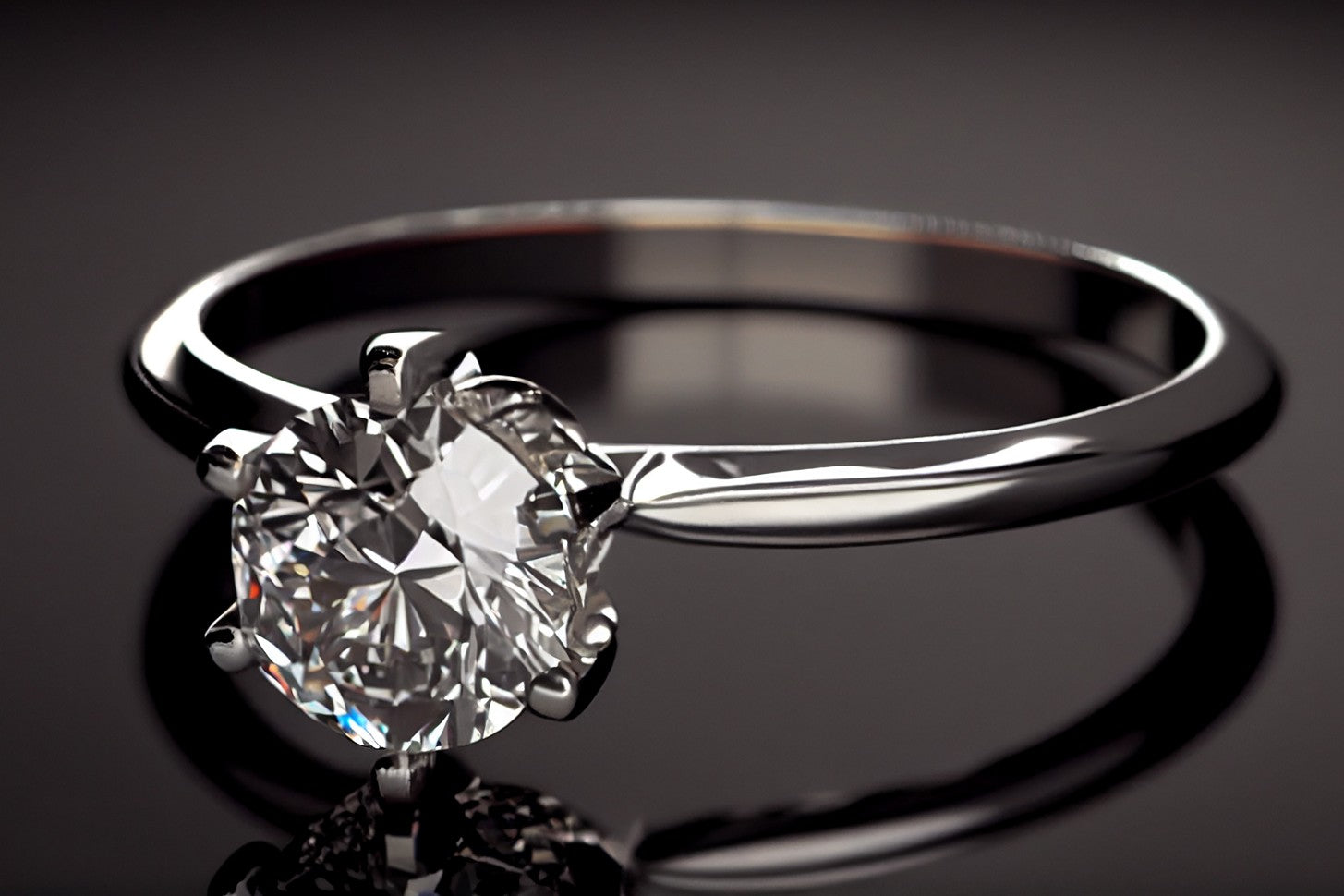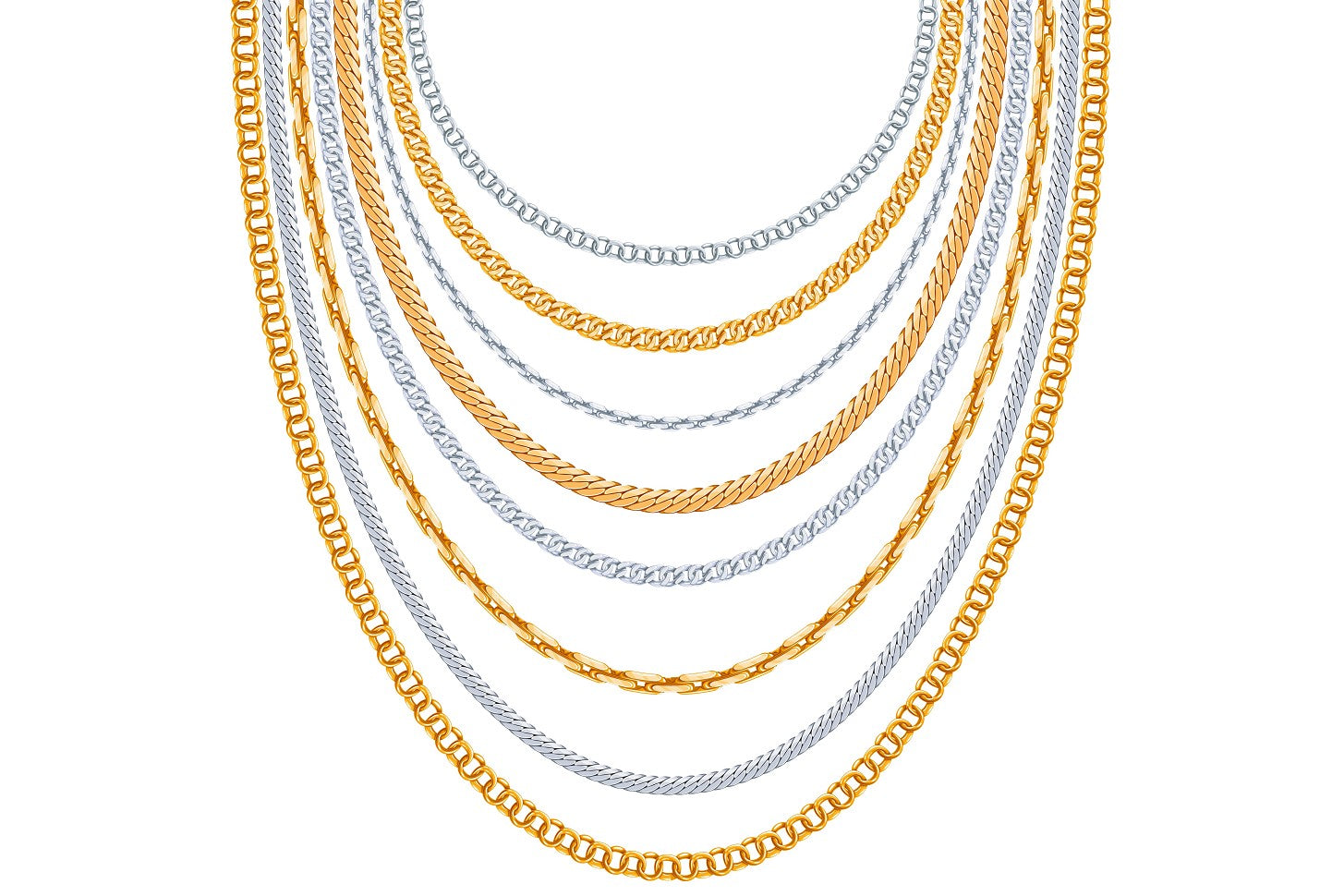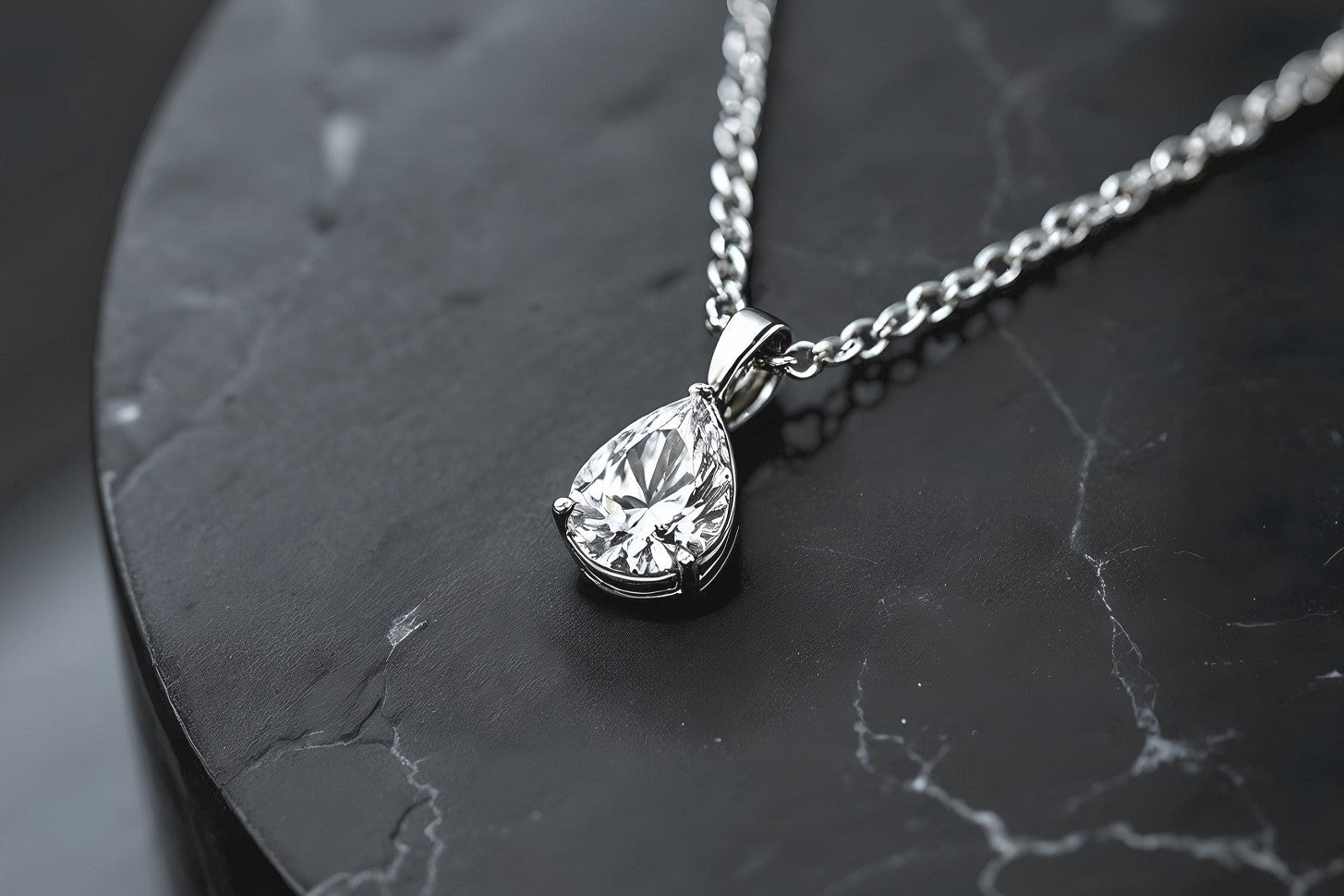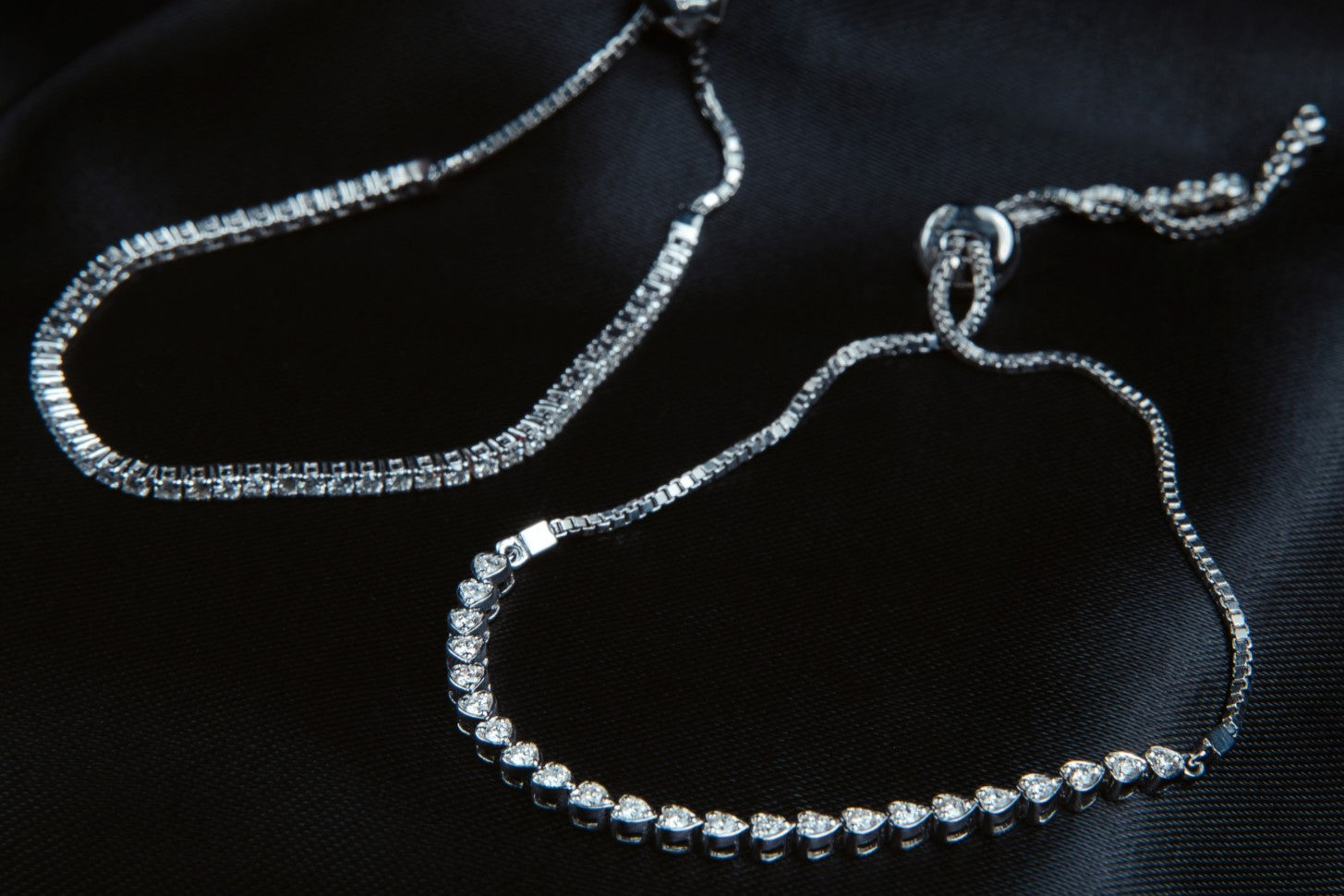How to Read Your IGI Diamond Certificate
Understanding your IGI (International Gemological Institute) diamond certificate helps you confidently know your diamond's exact details. Below, we'll walk you through each essential specification. Be aware that IGI certificates for diamonds below 1 carat and above 1 carat are formatted differently due to the level of detail required. Larger diamonds typically receive a more detailed analysis and have additional characteristics listed clearly because these details significantly impact the diamond's value.:
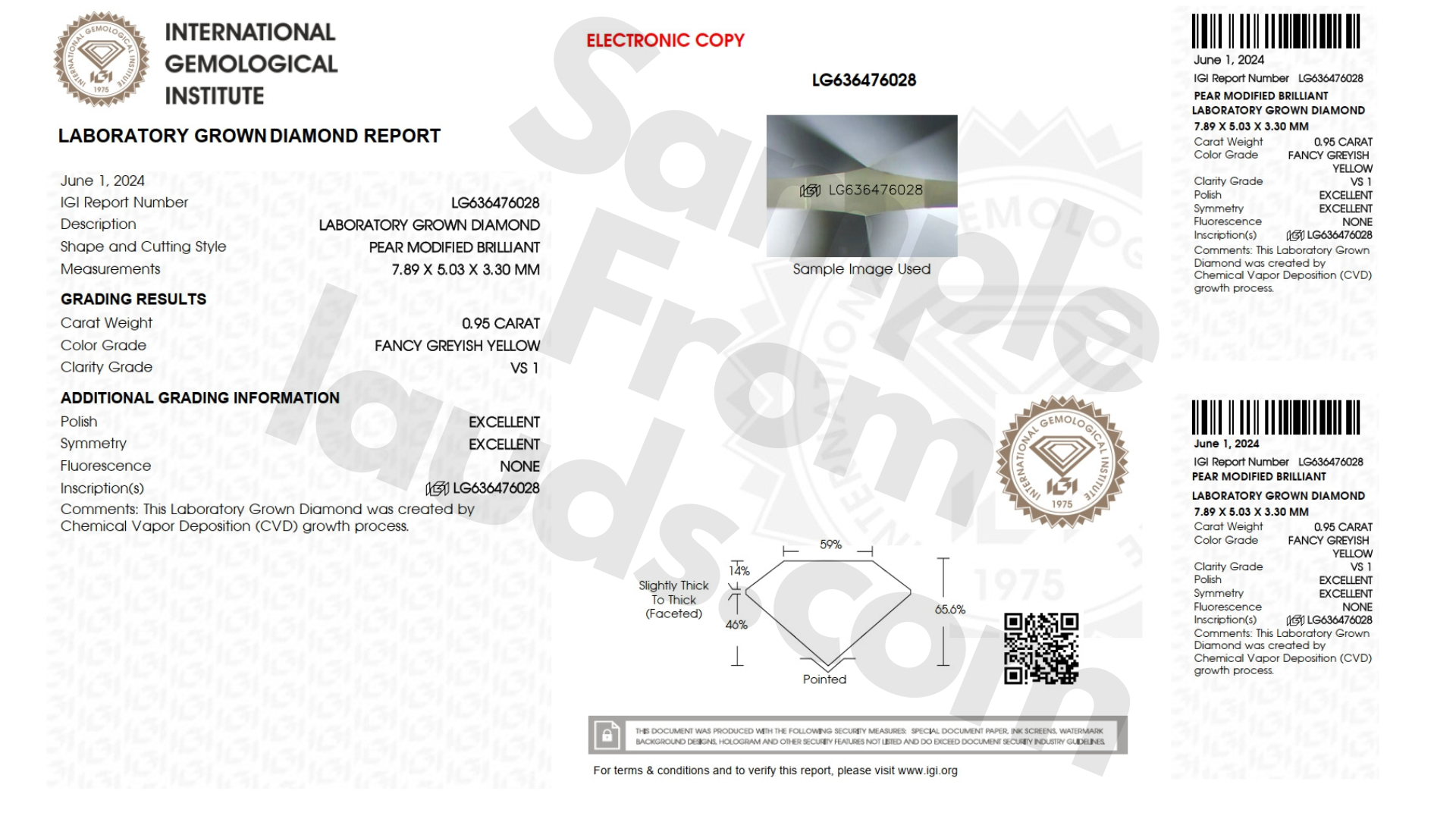
The First Part
1. DATE:
Shows the exact date when the diamond was inspected by IGI.
2. IGI Report Number:
A unique identification number specific to your diamond. It is laser-inscribed on your diamond's girdle (waist). You can view this inscription using a 30x magnifying lens.
3. Description:
Specifies the type of diamond certified. For IGI-certified stones, it usually indicates "Lab-grown diamond."
4. Shape and Cutting Style:
Describes the diamond's shape. Most diamonds certified by IGI are "Round Brilliant." For other shapes and cutting styles, please refer to our diamond shape guide.
5. Measurements:
Provides the exact dimensions of your diamond, usually listed in millimeters.
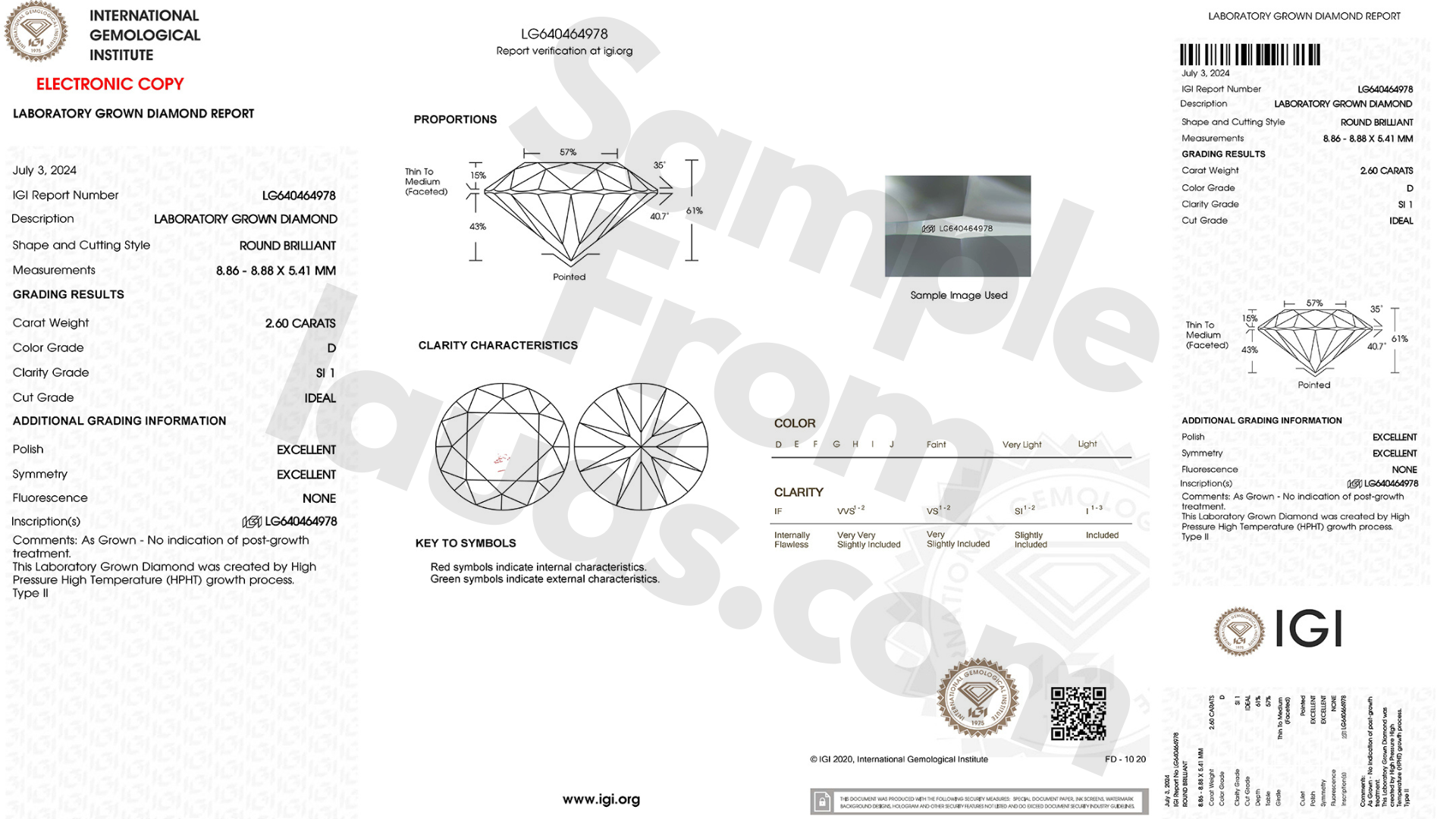
The Sceond Part
6. Carat Weight:
Indicates the weight of your diamond. "Carat" (ct) is the standard unit for diamond weight; 1 carat equals 200 milligrams.
7. Color Grade:
Grades range from D to Z, with D being the most colorless and transparent. Diamonds graded beyond Z are classified as colored diamonds. Refer to our color grading guide for more details.
8. Clarity Grade:
Evaluates diamond purity, from FL (Flawless) to I3 (Included Level 3). Lower grades indicate more inclusions or imperfections.
9. Cut Grade:
Assesses how well the diamond is cut, from Ideal (highest brilliance) to Poor (lowest brilliance).

The Third Part
10. Polish:
Rates how smoothly the diamond's surface has been polished. A higher polish grade enhances a diamond's brilliance.
11. Symmetry:
Evaluates how well-aligned the diamond's facets are. Better symmetry results in enhanced brilliance and balanced appearance.
12. Fluorescence:
Describes the glow your diamond emits under ultraviolet (UV) light. It can range from None to Strong. Typically, fluorescence is not visible under normal lighting.
13. Inscriptions:
Details any engraved codes or texts. IGI-certified lab-grown diamonds often have "LG" followed by the unique code engraved on the diamond.
14. Comments:
Additional notes about your diamond, typically mentioning the growth method—either High Pressure High Temperature (HPHT) or Chemical Vapor Deposition (CVD).

The Middle Part
15. Proportions:
Details the dimensions and angles of the diamond’s facets, affecting its overall brilliance and appearance.
16. Clarity Characteristics:
Visual diagrams showing the location, size, and type of inclusions or flaws within the diamond.
In conclution:
By understanding these fields, you can better appreciate your diamond's unique qualities and value.
Let us know if you have any questions or want to learn more—simply contact us at support@lauds.com. Our family business has been proudly operating since 1966. With direct connections to reputable diamond labs, you can always trust Lauds.com when purchasing lab-grown diamonds.


